
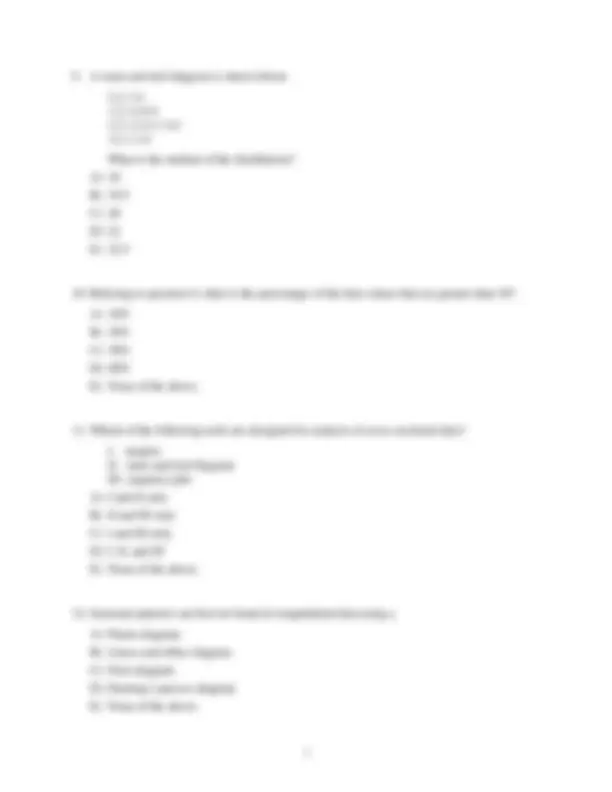
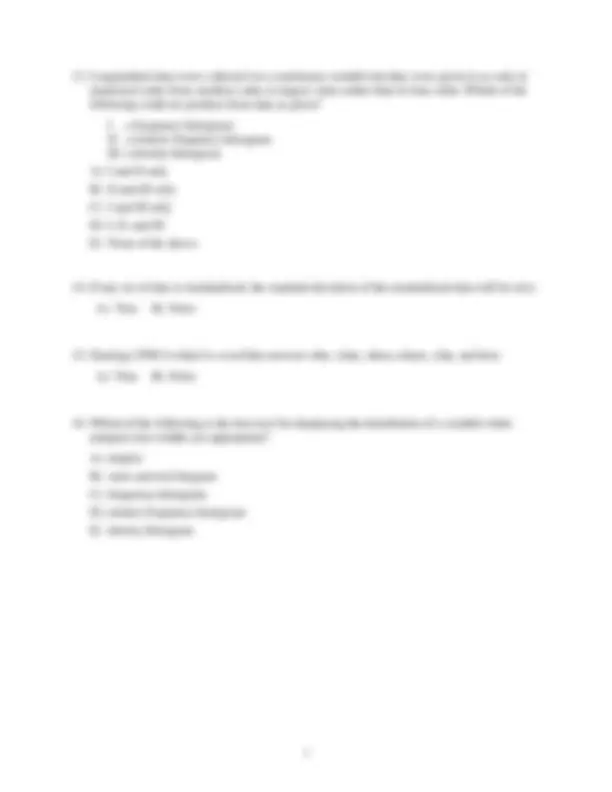
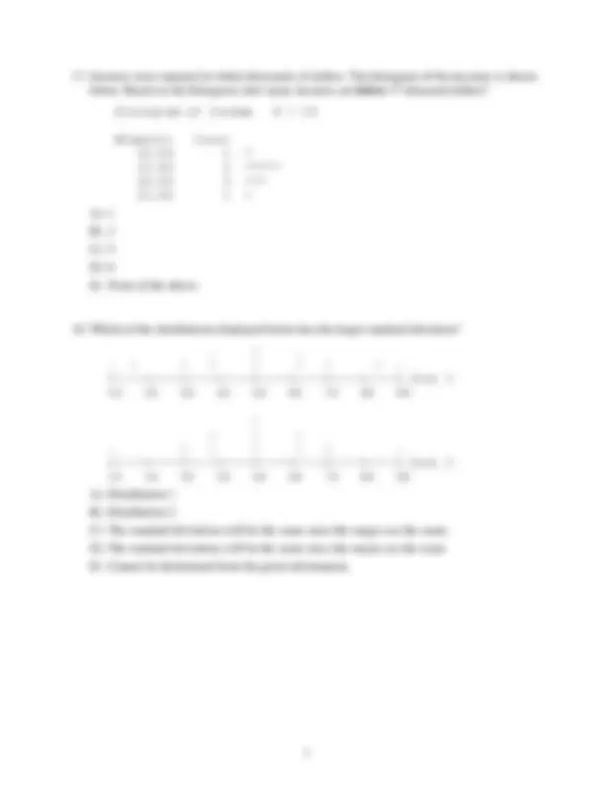
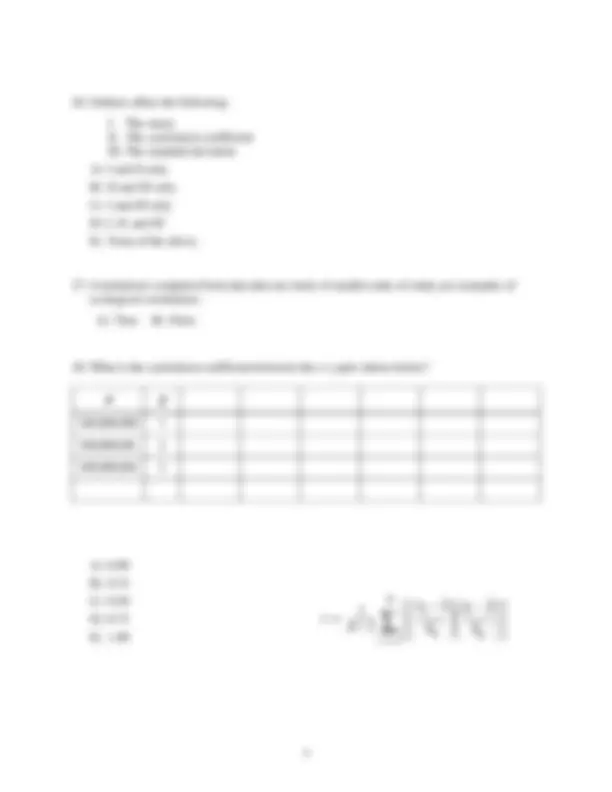
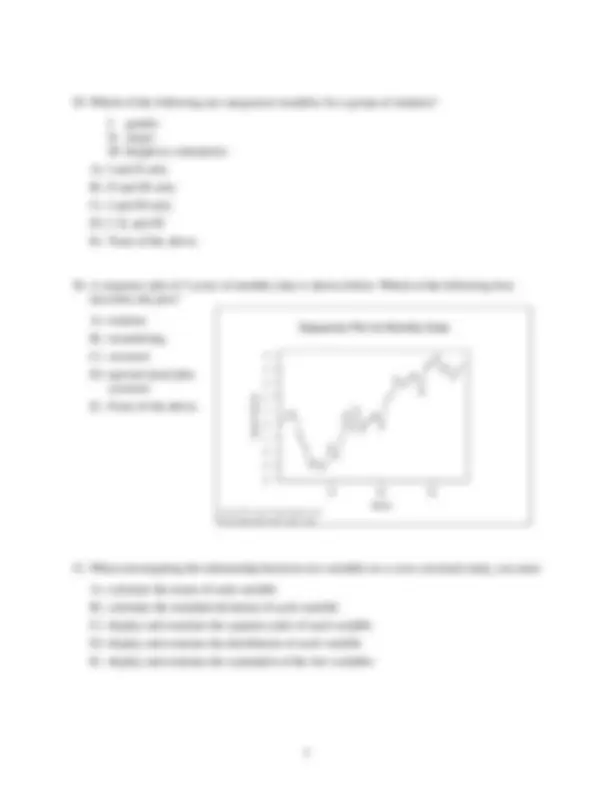
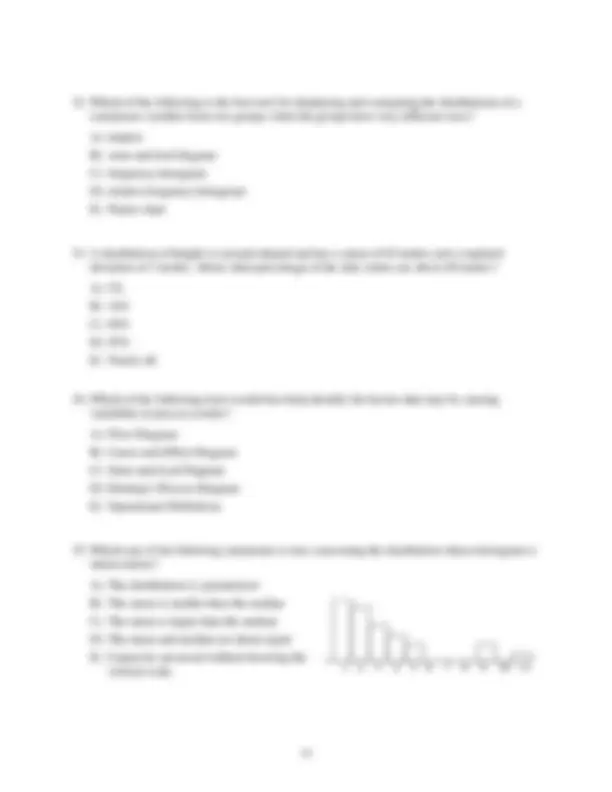


Study with the several resources on Docsity

Earn points by helping other students or get them with a premium plan


Prepare for your exams
Study with the several resources on Docsity

Earn points to download
Earn points by helping other students or get them with a premium plan
Community
Ask the community for help and clear up your study doubts
Discover the best universities in your country according to Docsity users
Free resources
Download our free guides on studying techniques, anxiety management strategies, and thesis advice from Docsity tutors
A quantitative methods exam from 1995 with 35 questions covering topics such as data analysis, statistics, and data visualization. The exam includes questions about calculating means and standard deviations, interpreting different types of plots, and understanding concepts such as longitudinal and cross-sectional data.
Typology: Exams
1 / 11

This page cannot be seen from the preview
Don't miss anything!







The 35 exam questions and answer sheet are both to be turned in to your Discussion Section instructor at the end of the exam. Code your name and ID number on the answer sheet. Code your Section number under OPTIONAL CODES in positions L M N.
A) display and examine a sequence plot of the data. B) display and examine a distribution plot of the data. C) brainstorm and create a cause-and-effect diagram for the process. D) construct and analyze a flow diagram for the process. E) use Deming’s process diagram to analyze the process.
A) longitudinal data on a categorical variable. B) cross-sectional data on a categorical variable. C) longitudinal data on a continuous variable. D) cross-sectional data on a continuous variable. E) data with both longitudinal and cross-sectional aspects.
II
A) mean1 < mean2 and stdev1 = stdev B) mean1 < mean2 and stdev1 < stdev C) mean1 = mean2 and stdev1 < stdev D) mean1 < mean2 and stdev1 > stdev E) mean1 < mean2 and stdev1 = stdev
A) True B) False
Distribution 1
Distribution 2
A) True B) False
A) True B) False
Midpoint Count 10.00 1 * 15.00 5 ***** 20.00 3 *** 25.00 1 * A) 1 B) 3 C) 5 D) 6 E) None of the above.
: : : :
. : : : : :. +----+----+----+----+----+----+----+----+ Dist 2 10 20 30 40 50 60 70 80 90 A) Distribution 1 B) Distribution 2 C) The standard deviations will be the same since the ranges are the same. D) The standard deviations will be the same since the means are the same E) Cannot be determined from the given information.
What percentage of the married people are male? (Round to the nearest whole percent.) A) 20% B) 30% C) 40% D) 50% E) 60%
Gender
Marital Status Single Married Other female 100 40 60 male 200 60 40
I. The mean II. The correlation coefficient III. The standard deviation A) I and II only B) II and III only C) I and III only D) I, II, and III E) None of the above.
x y 100,000,000 1 100,000,001 2 100,000,002 3
i = 1
n = ∑
Name:_____________________________________________________________________ Section:_______________________ ID: __________________________ Circle one : Form A B C D
If you believe that a test question is defective in some way, please list your complaint here. All complaints will be considered in our interpretation of the test results. To correctly identify the test question we must know which form of the test you have taken.
Remove this last page from the exam questions and turn it in with your exam questions and answers to one of the instructors in the course.
Question number: